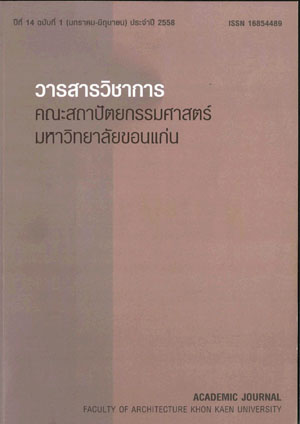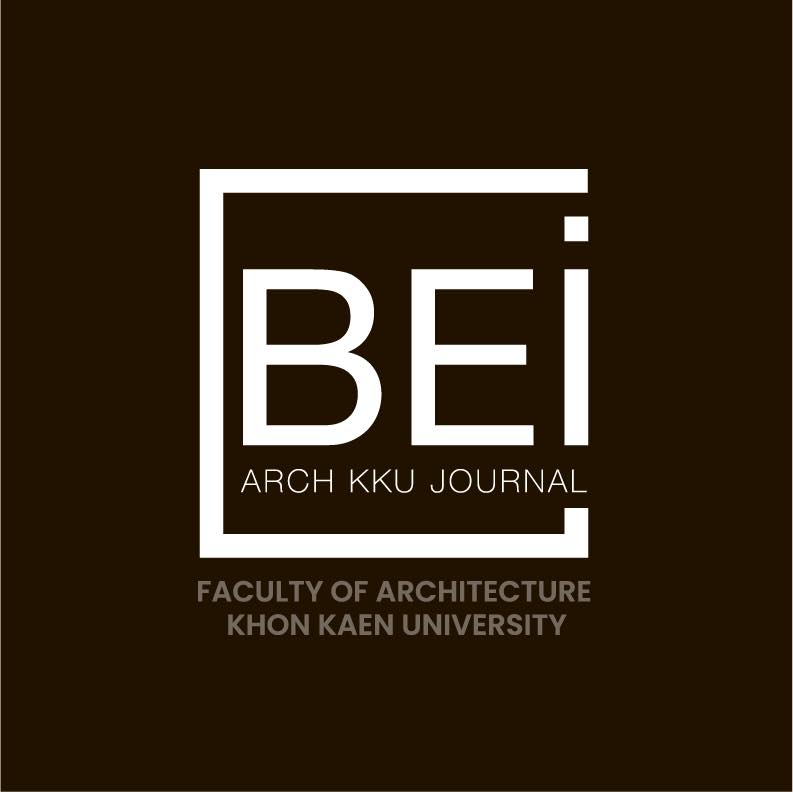ชุมชนผลิตหม้อดินเผาบ้านพันหลวงเมืองหลวงพระบาง: การคงอยู่ในภาวะใกล้ดับสูญ
คำสำคัญ:
หม้อน้ำดินเผา, รูปแบบและกระบวนการผลิต, บ้านพันหลวง, Pottery, Type and process, Ban Phanlouangบทคัดย่อ
บ้านพันหลวง เมืองหลวงพระบาง ในอดีตเป็นชุมชนที่มีช่างปั้นหม้อเป็นจำนวนมาก แต่ในปัจจุบันมีช่างปั้น หม้ออยู่เพียงคนเดียว จากการที่เมืองหลวงพระบางได้รับการแต่งตั้งให้เป็น “เมืองมรดกโลกทางวัฒนธรรม” จาก UNESCO ส่งผลให้เมืองหลวงพระบางกลายเป็นเมืองท่องเที่ยวระดับโลก ที่มีนักท่องเที่ยวเดินทางเข้ามาบริโภค ปรากฎการณ์ทางศิลปะ วิถีชีวิตและประเพณีพิธีกรรมที่สัมพันธ์กับอดีต เกิดอุตสาหกรรมการท่องเที่ยว จากอาชีพบริการ การผลิตจำหน่ายงานหัตถกรรม และสินค้าพื้นเมืองต่างๆมากมาย สร้างอาชีพและรายได้ให้กับ ชาวหลวงพระบางและชาวลาวที่เข้ามาทำงานในพื้นที่นี้มีการฟื้นฟูศิลปะวิทยาการ และงานประเพณีแบบดั้งเดิม เพื่อสนองตอบการเปลี่ยนแปลงที่เกิดขึ้น แต่การผลิตหม้อดินเผาบ้านพันหลวงกลับไม่ได้รับการเหลียวแลจากหน่วย งานราชการหรือองค์กรเอกชน ในการรักษาหรือพัฒนารูปแบบผลิตภัณฑ์ให้เหมาะสมกับความเปลี่ยนแปลงของพื้นที่ หรือตอบสนองความต้องการของผู้มาเยือนจากต่างถิ่น เมื่อความต้องการใช้งานหม้อดินเผาแบบดั้งเดิมของชาวเมือง ลดลง กลุ่มช่างผู้ผลิตก็ลดจำนวนลงและหันไปประกอบอาชีพอื่นที่มีรายได้ดีกว่า เยาวชนรุ่นใหม่ก็ไม่สนใจเข้ามา เรียนรู้ การผลิตหม้อดินเผาแห่งบ้านพันหลวงที่มีประวัติอันยาวนานก็อาจจะจบลงในอนาคตอันใกล้หากไม่มีใครมอง เห็นความสำคัญของอาชีพและงานหัตถกรรมที่เป็นวัฒนธรรมดั้งเดิมที่เกี่ยวข้องกับวิถีชีวิตชาวลาว ที่บ่งบอกถึงความ เป็นชุมชนเกษตรกรรมนี้ ในบทความผู้เขียนมีการเก็บข้อมูลเชิงคุณภาพโดยการลงพื้นที่ศึกษาจากการสังเกตุ สัมภาษณ์ และนำเสนอข้อมูล ประวัติหมู่บ้าน ความเชื่อที่เกี่ยวข้องกับหม้อดินเผา กระบวนการผลิต และรูปแบบผลิตภัณฑ์ในอดีต ถึงปัจจุบันอย่างละเอียด เพื่อเป็นประโยชน์ในการเผยแพร่และการศึกษา
Ban Phanlouang Pottery Community: Existence in a Time of Flickering
Nattapong Prompongsaton
Ban Phanlouang, Louangphrabang, was a pottery community with numerous potters in the past. However, there is only one potter left here nowadays.With a designation to be a UNESCO “Cultural World Heritage”, Louangphrabang became a world’s tourist destination with a large number of tourists as a source of arts, lifestyles and traditions related to the past. This is a significant factor creating tourism industries, be they services, handicraft and local products production and selling, leading to job opportunities and incomes for the locals and Laotians from other regions. Additionally, the traditional arts, technologies and customs were rehabilitated in order to serve these changes. However, Ban Phanlouang’s pottery production has not been interested by government or private agencies, in terms of conservation, development to be appropriated with the changes of area, or serving the tourists’ demands. When the demands of traditional pottery reduced, the number of the potters also decreased since they decided to do a job with higher profit. Moreover, the new generation is not interested in pottery anymore. A long-time legend of Ban Phanlouang’s pottery may be discontinued if it is neglected.According to this article, qualitative data was collected by site survey, together with observation and interview. It is aimed to thoroughly present history of the village, beliefs related to the pottery, including the production and forms of the products from the past to the present, for dissemination and educational uses.
ดาวน์โหลด
รูปแบบการอ้างอิง
ฉบับ
ประเภทบทความ
สัญญาอนุญาต
ทัศนะและข้อคิดเห็นของบทความที่ปรากฏในวารสารฉบับนี้เป็นของผู้เขียนแต่ละท่าน ไม่ถือว่าเป็นทัศนะและความรับผิดชอบของกองบรรณาธิการ




